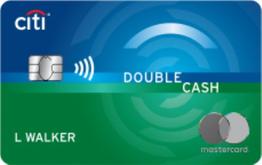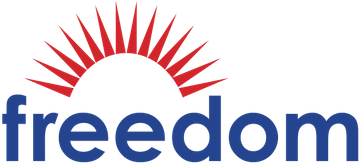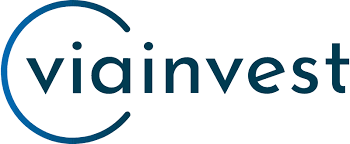DEBT HELP
How to Get Out of Debt: Where to Start

Trying to get out of debt is not only challenging — it can be downright all-consuming.
Whether it’s the first time you’re addressing it (or the second or third), making the decision to step up and deal with the debt you owe once and for all is a big move in the right direction.
We probably don’t need to mention that navigating through situations like this can become stressful, but thankfully, paying off debt can become more manageable by implementing and following the right strategies to help you achieve your goals.
In this guide, we will explore what debt is, how to figure out exactly how much debt you owe, and share the best, most foolproof, strategies on how to pay off debt faster and easier.
In this article
- What is debt?
- How to tally up and confront your debt
- Strategies to pay off debt
- Which debt advice should you follow?
- How to pay debt off even faster
- Bottom line
What is debt?
The term “debt” refers to money that you owe. It covers all types of agreements such as student loan debt, car loans, credit cards, medical bills, home equity, payday and personal loans, and IRS or government debt.
The total amount of consumer debt in the U.S. in 2020 was over $4 trillion. That means a lot of us are likely in some sort of debt.
Many Americans look toward credit counselors and debt relief programs to learn how to manage and pay down what they owe. However, there are ways you can control mounting debt yourself. First, you will want to figure out just how much debt you owe.
How to tally up and confront your debt
If you have only one credit card or personal loan payment, it’s easy to see at a glance how much you owe. However, if you’re like most Americans, you likely have multiple lines of credit and various types of debt.
Here’s how to track down and total it up so you can decide how to pay off debt:
1. Total up your debt
First, check each account and write down the total amount of your debt. You may have to dig into some accounts or statements to find your current loan amounts. But having every item in front of you at once can help you determine which is highest, how to consolidate multiple debts, and prioritize the most urgent ones. You may also want to note the type of debt it is: personal loan, credit card, auto loan, etc.
2. Calculate your debt-to-income ratio (DTI)
Next, calculate your debt-to-income ratio (DTI). Your DTI compares how much money you owe to how much you earn. Lenders often use this figure to decide whether you qualify for loans or services.
In general, a DTI ratio of 35% or less is manageable. Between 36% and 49% means there’s room for improvement, and 50% or more requires immediate action to resolve.
How to calculate your DTI ratio:
1. First, add up all your monthly bills. Include debt payments like credit card balances, student or auto loans, plus rent, alimony or child support, medical debt, and other debt. You can, but don’t have to, include household expenses like utilities and groceries.
2. Then, take the total monthly debt and divide it by your gross monthly income. Gross monthly income is the amount of your paycheck before taxes come out.
3. The resulting number is your DTI percentage.
3. Check for debt in collections
If you are unsure about how much debt you have, check to see if you have any outstanding accounts in collection. One way to track this down is to check your credit report. Many financial institutions and apps offer a free credit score, but your bank or credit card company may also provide similar services. You are also entitled to a free credit report each year from each of the credit reporting bureaus.
4. Recognize bad credit behavior
Once you have an idea of how much you owe, and where your debt-to-income ratio stands, it’s time to reflect on the habits that put your credit score in danger.
Spending more money than you make or trying to buy the newest and most expensive gadgets will keep pushing you back into the debt cycle, and also may be the reason why you’re always broke.
Recognizing your debt-inducing habits is only the first step. You also must take responsibility for those behaviors and work toward changing them. However, the primary focus is creating a manageable plan for how to pay off debt.
Strategies to pay off debt
Rather than making the minimum payment on all debts, try one of these repayment plan options to make a dent in the balance faster. While each strategy has its own benefits and drawbacks, you’ll need to develop money management skills to make any one stick.
1. Debt snowball method
Developed by personal finance expert Dave Ramsey, the debt snowball method uses small steps to pay off debt. It’s more of a psychological approach than a mathematical one.
The idea is to pay off your lowest balance first. That way, when you pay off one entire line of credit, you will feel accomplished. This psychological boost can help keep the momentum going as you pay off the next item in line.
The snowball method gets its name from the fact that once you pay off the smallest debt, you roll that payment onto the next lowest balance. In this method, each smaller payment continues to add up until you reach the highest balance and begin chipping away at it.
While this method may not work for everyone – especially those who recognize the psychological ploy for what it is – many finance experts swear by it.
2. Debt avalanche method
In contrast to the debt snowball, the debt avalanche method advises paying the minimum payment on every account balance simultaneously. Then, if you have any debt repayment funds left over, you can apply that amount to the highest interest debt.
The avalanche method (also known as “debt stacking”) is a debt reduction strategy that many people begin using out of habit. After all, making the minimum payment is often the only means of debt reduction available.
At the same time, when people with high levels of debt have extra money, they often focus on paying down the highest balance first to make a more significant dent in the overall amount.
Another benefit of the avalanche method is that it satisfies consumers’ needs to see a lower balance on all accounts. While it’s not the same as the psychology for the snowball method, the avalanche method often works for people who prefer to see incremental change across the board rather than on only one account.
Snowball vs. avalanche: which is better?
Choosing between the debt snowball method versus avalanche method depends on your personal circumstances. However, there is academic research on both strategies that explains how to pay off debt with either strategy.
The primary difference between the two is interest rate versus overall balance. The snowball method concentrates on paying the smallest balance first, regardless of the interest rate, while the avalanche method focuses on reducing debts with the highest interest rate.
In theory, the latter approach means fewer fees due to interest than the snowball method. And although the avalanche method saves more money in interest overall, there’s still more to it than that.
Social science explains that although the avalanche method may prove more efficient in paying off debt with fewer fees, human nature disagrees with the process (hence the psychological effect). One study showed that people with high debt are more likely to stick to a plan that focuses on paying off lower balances first.
Other experiments showed that people who paid down debt one account at a time helped maintain their motivation long-term. Plus, the overall focus was on what portion of a balance they had success paying off, rather than what was remaining.
Still, your circumstances may influence your game plan when it comes to which loans to pay off first with snowball versus avalanche debt reduction methods.
When choosing an approach, it’s helpful to do the following:
- Calculate the measurable difference first, using your own figures from existing debt. This will show you the time it takes to pay off loans plus the amount of money you stand to save by either method.
- Look at the numbers, not just the difference between the two. Also, consider the timeframe for your debt payoff, and whether a shorter payoff period is worth a difference in payments.
- Check your motivation level, whether monthly or less frequently. The best debt reduction plan is one you can work with long-term.
- Focus on one account at a time, regardless of whether it’s a high interest or high balance account. Making progress is the best indicator that a plan is working for you.
- Keep working at it and acknowledge even the smallest of successes.
3. Balance transfer credit cards
Balance transfer credit cards are a common strategy for debt reduction, especially if you are trying dealing with high credit card interest rates or overall credit card debt. A balance transfer credit card is one with a low- or 0% introductory APR. Transferring a balance to a credit card with a lower interest rate can save consumers money on debt repayment.
After the introductory period, however, some balance transfer cards may revert to extraordinarily high APRs. Therefore, this method may not be for you if you have a high amount of debt without the means to pay it off within the introductory period.
If you have multiple accounts with low balances but high-interest rates, consolidating them to one of the best balance transfer cards may save you money overall.
Earn Cash Back Twice
Citi Double Cash Card

Citi Double Cash Card
Learn How to Apply
Annual Fee
$0
Rewards Rate
up to 2% cash back
Benefits and Drawbacks
Benefits
- 0% intro APR on balance transfers for 18 months
- 2% cash back on all purchases – 1% when you buy and 1% when you pay
- No annual fee
Drawbacks
- Foreign transaction fee
- No sign-up bonus
Card Details
- Earn cash back twice: 1% when you buy + 1% when you pay
- up to 2% cash back on all purchases: 1% as you buy and 1% as you pay
- Intro balance transfer 0% offer: 0% for 18 months then 13.99% to 23.99% (variable)
4. Debt consolidation
Debt consolidation loans function much like balance transfer credit cards in that it allows you to combine all of your loans into one, so only a single monthly payment is required. Essentially, you would be taking out one loan to cover all (or a selection) of your debts.
This approach can help some consumers save money on debt repayment, but it’s important to look at the loan terms carefully. While some debt consolidation programs incur higher fees than if you continue to pay minimum payments on multiple debts, the best debt consolidation companies help you pay off debt while incurring nominal fees.
In the long run, debt consolidation can save money, depending on how high your interest rates are and what your loan terms are.
Great for Over $20K in Debt
 Visit Freedom Debt Relief
Visit Freedom Debt Relief
Freedom Debt Relief Benefits
- Recommended for debts $27,000 and higher
- Resolve your debt in as little as 24 – 48 months
- They’ve helped save their clients over $10 billion
- Over 600,000 customers and counting
Visit Freedom Debt Relief
5. Debt settlement
Companies that offer debt settlement work on your behalf to negotiate with creditors to secure a reduction in your overall debt.
Then, you make a payment to the debt settlement company to absolve your debt. While this strategy works for consumers who are possibly facing bankruptcy or more severe credit problems, debt settlement can affect your overall credit score.
Although debt settlement negatively impacts your credit, especially if you make late payments on the settlement amount, this is a helpful option for people whose debts are so severe that they are considering bankruptcy. Also, making payments on time and eventually paying off the settlement amount will help your credit begin to recover.
Debt consolidation vs. debt settlement: which is better?
Similar to before, choosing between debt settlement vs. debt consolidation to pay off your debts depends on your personal circumstances.
If you are hoping to increase your credit score, choosing to consolidate your debt may prove to be the smarter choice. Settling can negatively impact your credit, debt consolidation is often easier on your credit report. Also, because debt settlement companies operate independently, you may incur fees when working with them rather than choosing a consolidation loan.
In general, though, debt settlement can significantly reduce the total amount that you owe, meaning you could pay the balance off sooner and improve your credit faster.
6. Credit counseling and debt management
Many finance experts offer services and courses that can help you manage your debt. According to the Federal Trade Commission, however, reputable credit counselors are non-profits and offer services across local and online locations.
Finding a credit counselor can start with a quick internet search for a credit counseling agency in your area. An organization that offers multiple services, such as budget counseling, debt management and savings classes, and in-person consultations is ideal.
However, visiting a credit counseling organization may incur additional fees beyond your debt payments even if the agency is a nonprofit. If you enroll in a debt management plan, the organization could negotiate and pay off debts on your behalf, but they may charge for this service. Also, if your credit counselor recommends a debt management plan, ask plenty of questions before agreeing to the terms.
To start, check out our list of the best credit counseling companies.
Which debt advice should you follow?
If you have multiple accounts and outstanding debts, it can be difficult to choose debt advice to follow. Overall, your choice will depend on:
- How much you owe
- How many accounts and what interest rates you have
- How high each balance is
For example, if you have multiple low balances but each one has high-interest rates, your best option may be debt consolidation or a balance transfer credit card. Both options mean fewer interest payments over the long term, and you can pay down low balances faster.
No matter which advice you ultimately choose to follow, it’s important to have a plan of attack (and to stick with it).
Know how much you can afford to spend toward paying down debt each month. Use online calculators to project your long-term spending and savings. Also, this is a no-brainer, but avoid adding to your debt when possible.
Recognize that paying down debt may take years unless you have extra income to put toward the payments. Overall, setting small goals and making sure to track your progress can keep you motivated and ensure that you keep working toward paying down balances.
How to pay debt off even faster
Wondering how to pay off debt faster than your current timeframe? Here are nine strategies that can help you reach financial freedom sooner.
1. Create a budget
To stop increasing debt, you must first put limits on what you spend. Make a budget that takes into account your monthly income, basic expenditures, and debt repayment amounts. Then work on sticking with it.
2. Pay more than the minimum
Paying extra on any one account will help you pay it down faster and avoid more interest. Even a few extra dollars per month can make an impact, so when you have extra cash, plan to put it toward your debt. If you want to create more extra cash, consider starting one of the best side hustles.
3. Pay more
If you have extra income at the end of each month, put more toward your debt rather than entertainment or other purposes. It’s no fun to skip eating out, but if you put that amount toward a credit card payment, you will soon see the benefits and improve your credit. The same applies to work bonuses or cash gifts.
4. Stop spending
Cut your spending as much as possible. This ties in with budgeting, as reducing your spending is a comprehensive part of any budget. Cut out unnecessary expenses and put that cash toward debt repayment.
5. Unsubscribe
As painful as it might be, it’s time to cut ties with those newsletters and alerts that notify you about sales and promotions. Without the temptation in your inbox or mailbox every day, you are less likely to spend on things you don’t need.
6. Hold a sale
If you have unwanted items in your home, consider selling some of those high-ticket items and putting the money toward debt repayment.
7. Reassess the basics
There are often ways to downsize that don’t require huge sacrifices, such as swapping cable TV services for a monthly subscription of Netflix or Hulu, which can cut costs substantially, and eat at home to save cash versus eating out for most meals. You will be surprised as to how quickly it all adds up.
8. Find new rewards
Instead of rewarding yourself by buying new things when you reach a goal, consider gifting yourself in other ways. Enjoy your favorite show, cook your favorite meal, or give yourself permission to relax and read a book, without any other responsibilities to tend to.
9. Tell friends and family
It may feel embarrassing to admit that you are working on paying down debt, but enlisting the support of friends and family can help you make progress. People around you can keep you from spending unnecessarily and knowing that you are trying to save money prevents them from encouraging your bad cash habits.
Bottom line
The key strategy for how to pay off debt, no matter how much you have, is to stay motivated. Plan a reward for yourself when the debt drops to zero and maintain a can-do mentality. Before you know it, you’ll have made more progress than you ever thought possible. You will be well on your way to being debt-free.
Great for Over $20K in Debt
 Visit Freedom Debt Relief
Visit Freedom Debt Relief
Freedom Debt Relief Benefits
- Recommended for debts $27,000 and higher
- Resolve your debt in as little as 24 – 48 months
- They’ve helped save their clients over $10 billion
- Over 600,000 customers and counting
Visit Freedom Debt Relief
Unmasking Online Deception: An In-Depth Social Catfish Review
Purple Garden Psychics – ($1/Min) FREE Trial Offers, Real Experience & Benefits And More

Refinancing an Auto Loan: How to Know If It’s a Good Idea

Reverse Mortgages Pros and Cons: Ripoff or a Good Idea?

8 Ways it Just Got Easier to Achieve Student Loan Forgiveness
Unmasking Online Deception: An In-Depth Social Catfish Review

Orchard Bank Credit Cards | NOT a Scam!

PrivacyGuard Review

How to choose where to study as an international student


